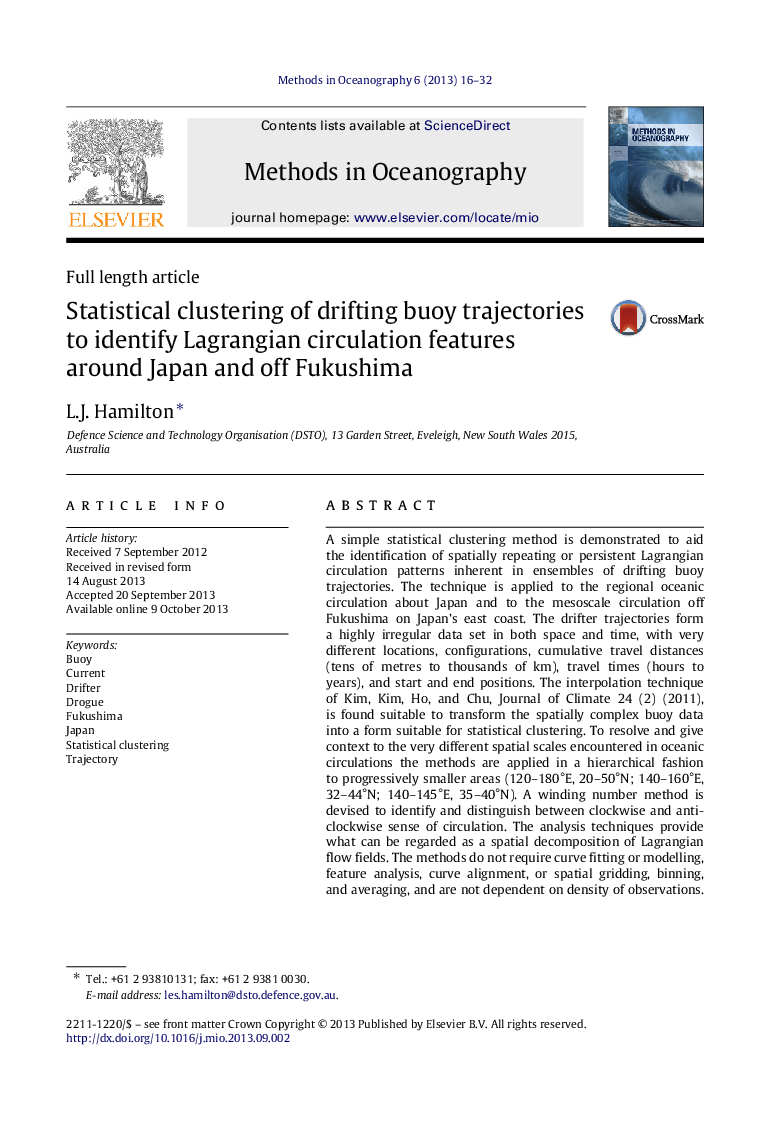| Article ID | Journal | Published Year | Pages | File Type |
|---|---|---|---|---|
| 1723299 | Methods in Oceanography | 2013 | 17 Pages |
A simple statistical clustering method is demonstrated to aid the identification of spatially repeating or persistent Lagrangian circulation patterns inherent in ensembles of drifting buoy trajectories. The technique is applied to the regional oceanic circulation about Japan and to the mesoscale circulation off Fukushima on Japan’s east coast. The drifter trajectories form a highly irregular data set in both space and time, with very different locations, configurations, cumulative travel distances (tens of metres to thousands of km), travel times (hours to years), and start and end positions. The interpolation technique of Kim, Kim, Ho, and Chu, Journal of Climate 24 (2) (2011), is found suitable to transform the spatially complex buoy data into a form suitable for statistical clustering. To resolve and give context to the very different spatial scales encountered in oceanic circulations the methods are applied in a hierarchical fashion to progressively smaller areas (120–180°E, 20–50°N; 140–160°E, 32–44°N; 140–145°E, 35–40°N). A winding number method is devised to identify and distinguish between clockwise and anti-clockwise sense of circulation. The analysis techniques provide what can be regarded as a spatial decomposition of Lagrangian flow fields. The methods do not require curve fitting or modelling, feature analysis, curve alignment, or spatial gridding, binning, and averaging, and are not dependent on density of observations. The methodology forms a useful data exploration technique for examination of trajectory data in general.
